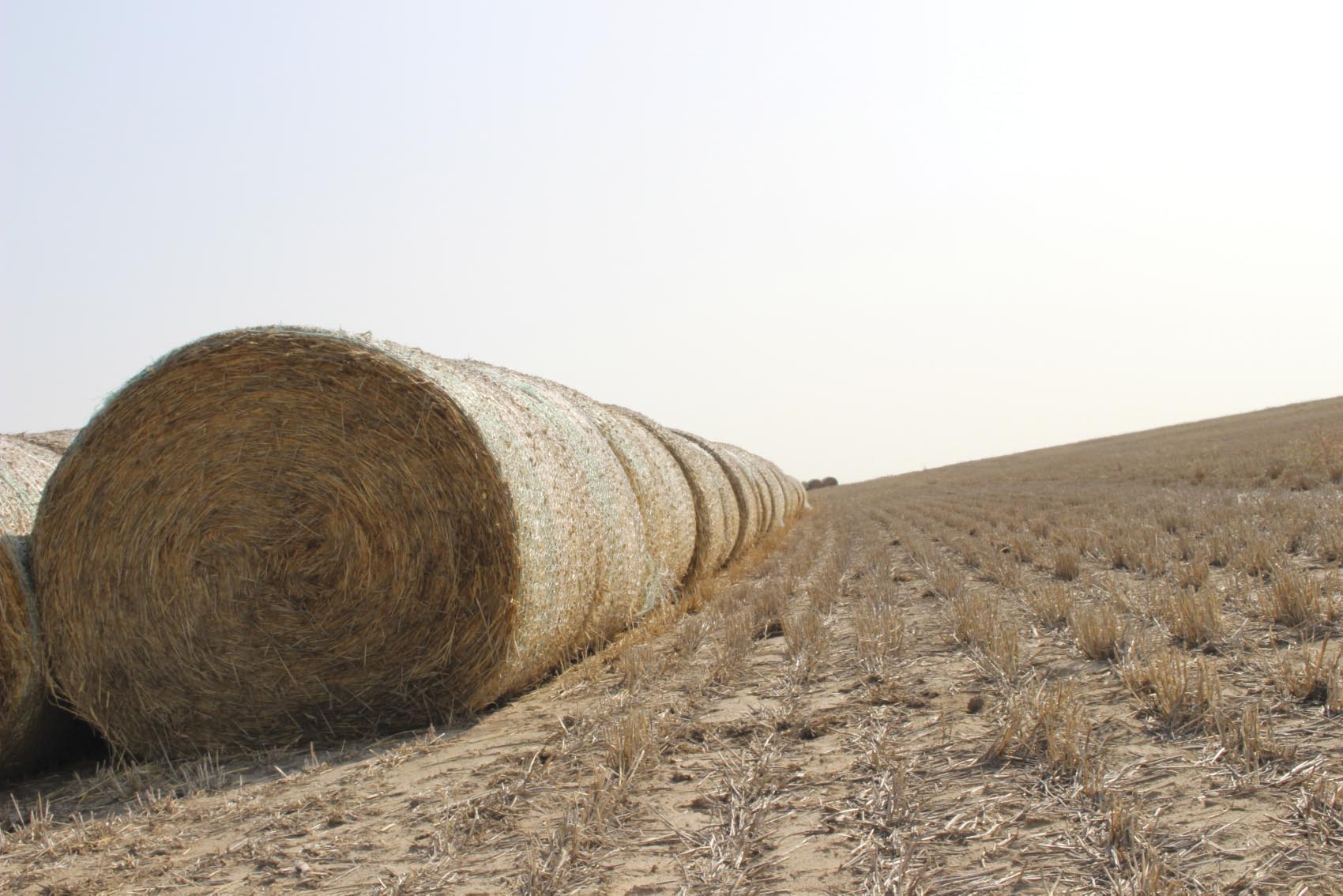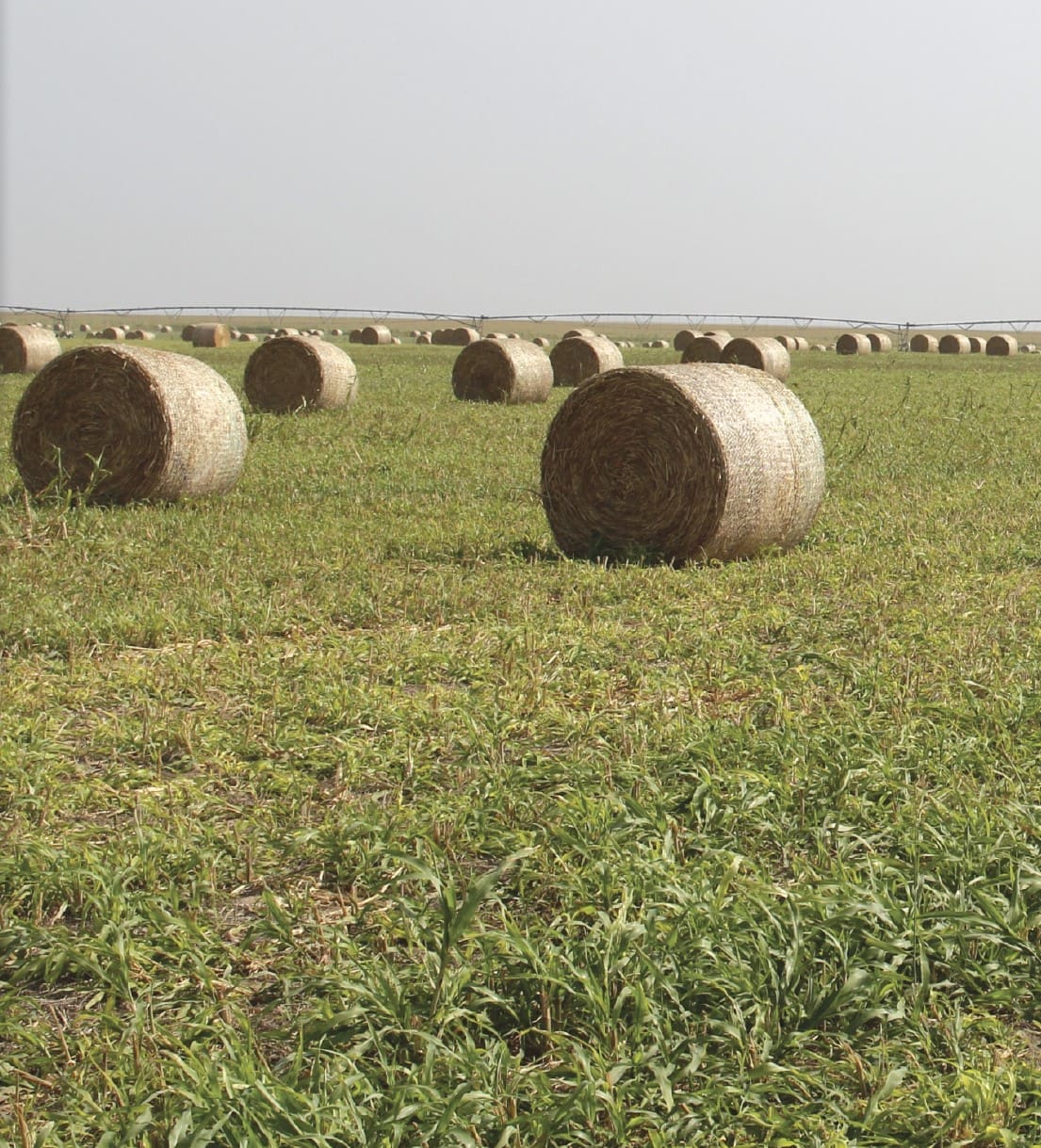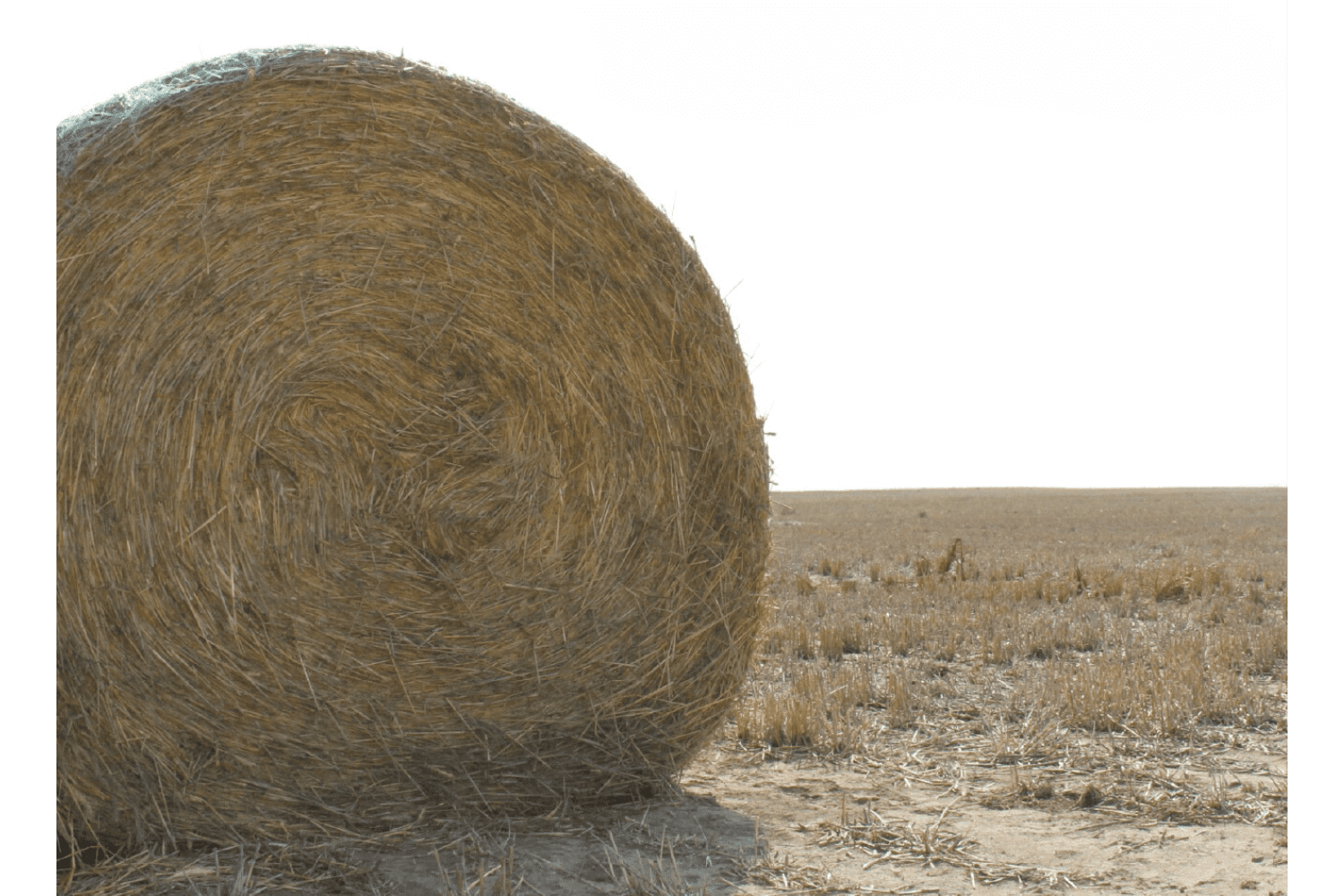

With the summer days behind us, hopefully hay yards are full, and producers across the country are starting to take inventory of what their winter hay needs may be.
Now is a good time to evaluate hay storage. In the upper Midwest, particularly the state of Iowa, the majority of our winter hay needs are put up in the form of a 5’x6’ large round bales.
While baling technology has evolved quite a bit from the days of the first large round bale using twine, they still present the same age-old problems of how to maximize usable feed in the package while minimizing storage losses due to elements.
With any bale shape, the key to a good-storing bale is a well-shaped and dense one.
With round bales, this means bales shaped flat and squared off at the edges.
The density of the round bale is a very important part to maximize the amount of hay per bale and to minimize bale squat when put up in storage to minimize surface area contacting the ground.
The secure binding product applied to the bale will also have a role in storage loss as well.
Twine tends to be higher in storage loss during a wet climate while net wrap products show the least amount of spoilage.
In a perfect world, buildings would be cheap and we all could have all hay stored under roof on a nice, dry, gravel floor to minimize loss.
However, being a producer myself, I know this is not always the case and you may have the ability to store only the high-quality hay under roof.

I have used several methods of minimizing bale storage loss when having to store bales outside.
When possible, always store bales on a high elevated area to allow water to drain away from them.
In wetter climates, I would advise against stacking bales on top of each other outside, exposing them to the elements, or stacking the bales on end, being in full contact with the ground on the bottom and rain/snow elements on the top.
The moisture will soak directly into the bale, causing spoilage.
Some producers set bales on tires or power poles to minimize ground contact and bottom bale spoilage.
This method is fairy effective; however sometimes the labor to line up all the tires, move them, and dispose of them can become far more costly than one may realize.
When possible, I always prefer to store bales in a line with the bale ends butted tight together to minimize end areas exposed to the elements.
When bales are poorly shaped, there can be some spoilage at ends due to water infiltration or pooling at areas where bale shape is poor and not aligning well.
Others that do not utilize net wrap have been successful stacking bales in a pyramid shape and covering bales with a commercially available hay tarp.
If you are thinking of using a hay tarp, I would encourage you to find one with a sturdy tie down system that spans underneath the bottom bales and has thick rope-to-fabric attachment points to minimize risk of wind damage.
Tarped stacks in areas of high humidity have had issues with moisture forming under tarp and rotting bales from underneath.
There needs to be airflow from the ends of the stack and under the tarp to allow airflow around bales and eliminate this problem.

With some of the basics outlined, the approach I take to hay storage is all bales are put up with caution to ensure all bales are put up dry (under 20% moisture) and have good bale density and shape to help shed water.
I recommend net wrap is applied covering the bale all the way to each edge.
Bales need to be moved quickly after being made to the final storage place to minimize areas of ground contact.
When moving bales that have sat in the field for a while or are needing to be moved to another storage area, be cognizant of self-unloading trailers.
It is best to prevent bales from rolling and causing multiple areas on a bale to have ground contact points.
The highest quality feed is stored under a roof on a dry floor that is free of moisture problems.
The hay stored in this manner is usually fed by either unrolling or putting in a bale ring.
When the bales are stored outside, push the ends of the bales tightly together in rows of consistent bale count by cutting and elevate the bales off of the ground if possible.
I prefer to store hay by putting them in uniform rows of equal bale count by cutting to simplify keeping track of feed inventory.
Elevating bales off of the ground will also mitigate the risk of the bottom of a bale freezing to the ground after a thaw and refreeze in the winter.

The lower quality hay used for feedlot hay or planned to be processed by a grinder should be stored close to the site of grinding and used up as quickly as possible.
However, it still should be stored with ends butted tightly together in rows with 10-12 inch spacing between rows on an elevated pad to allow water to drain away from bales.
When lining up hay in rows, remember to leave room for bales that may squat during storage and to minimize tire damage from running into the sides of bales before taking to feed.
I encourage trying to be diligent with the amount of hay stored outside on the ground whenever possible and make sure it is fed and used before starting to replenish the hay yard again.
Hay that may be carried over, kept for long-term storage, or used as a drought backup plan for next summer has the most “investment” in storage costs to ensure losses are kept to a minimum and quality is preserved as much as possible.
In wetter climates, a storage method that is becoming more popular is wet baling and wrapping hay to make silage bales.
As convenient of an option as this is, take into consideration cost effectiveness, baling conditions, and storage.
Just like plastic wrapping dry hay, wet-wrapped hay with a tear or hole in plastic wrap is prone to spoilage from both water and air.
Tube-style wrappers, individual bale wrappers, and plastic surface wrappers are all effective tools for putting up wet-wrapped silage bales when done correctly.
Surface plastic wraps can be applied over twine and net wrap to dry hay to decrease storage losses on high quality hay; however, access to wrappers, costs, and time may be a limiting factor for some producers.
With all these different methods of hay storage we have discussed this fall, think about what modifications can be implemented in your operation to cut costly storage losses down before winter or to prepare for next season.
Sometimes it is as simple as leaving bales stored in a line and only pulling out the bales you need for the week.
This allows them to be picked up with a bale bed easier versus having both ends of every bale exposed all season long in storage.
With a good portion of hay in a large round bale in the outer third or so of a bale, every little bit adds up to literally tons of hay savings over a season quickly.
 David C. Bruene is the Iowa State University Beef Farms Manager. He grew up on a diversified row crop, cow/calf, and cattle feeding operation in Gladbrook, Iowa. He has managed the Iowa State University Beef Teaching Farm and hay making operations since 2013. This operation consists of two purebred spring herds, Angus and Simmental, and a commercial fall herd with heavy adaptation of rotational grazing and alternative winter cow feed strategies for teaching, research, and demonstration. He and his wife Molly own and operate a small Angus cow/calf operation south of Boone, Iowa, with emphasis on profitable grazing, winter cow feeding strategies, and low stress stock dog handling practices.
David C. Bruene is the Iowa State University Beef Farms Manager. He grew up on a diversified row crop, cow/calf, and cattle feeding operation in Gladbrook, Iowa. He has managed the Iowa State University Beef Teaching Farm and hay making operations since 2013. This operation consists of two purebred spring herds, Angus and Simmental, and a commercial fall herd with heavy adaptation of rotational grazing and alternative winter cow feed strategies for teaching, research, and demonstration. He and his wife Molly own and operate a small Angus cow/calf operation south of Boone, Iowa, with emphasis on profitable grazing, winter cow feeding strategies, and low stress stock dog handling practices.
Get all Doc Talk episodes straight to your email inbox!